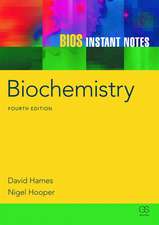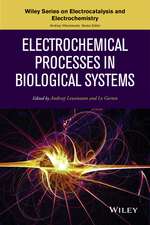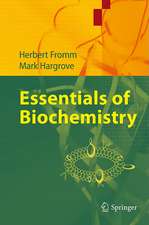PCR: Clinical Diagnostics and Research: Springer Lab Manuals
Autor Arndt Rolfs, Irmela Schuller, Ulrich Finckh, Ines Weber-Rolfsen Limba Engleză Paperback – 23 dec 2011
Din seria Springer Lab Manuals
-
 Preț: 385.84 lei
Preț: 385.84 lei -
 Preț: 362.59 lei
Preț: 362.59 lei - 18%
 Preț: 973.69 lei
Preț: 973.69 lei - 15%
 Preț: 695.85 lei
Preț: 695.85 lei - 18%
 Preț: 997.40 lei
Preț: 997.40 lei -
 Preț: 385.84 lei
Preț: 385.84 lei -
 Preț: 382.18 lei
Preț: 382.18 lei - 24%
 Preț: 1045.08 lei
Preț: 1045.08 lei - 15%
 Preț: 641.20 lei
Preț: 641.20 lei - 18%
 Preț: 939.33 lei
Preț: 939.33 lei -
 Preț: 381.43 lei
Preț: 381.43 lei - 15%
 Preț: 637.59 lei
Preț: 637.59 lei - 15%
 Preț: 639.25 lei
Preț: 639.25 lei -
 Preț: 376.68 lei
Preț: 376.68 lei - 18%
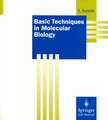 Preț: 1822.40 lei
Preț: 1822.40 lei - 18%
 Preț: 953.82 lei
Preț: 953.82 lei - 15%
 Preț: 645.14 lei
Preț: 645.14 lei - 15%
 Preț: 689.93 lei
Preț: 689.93 lei - 23%
 Preț: 821.58 lei
Preț: 821.58 lei - 19%
 Preț: 588.70 lei
Preț: 588.70 lei - 5%
 Preț: 727.44 lei
Preț: 727.44 lei - 18%
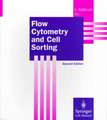 Preț: 1225.31 lei
Preț: 1225.31 lei - 18%
 Preț: 949.73 lei
Preț: 949.73 lei -
 Preț: 386.99 lei
Preț: 386.99 lei - 15%
 Preț: 657.25 lei
Preț: 657.25 lei - 19%
 Preț: 555.62 lei
Preț: 555.62 lei -
 Preț: 380.63 lei
Preț: 380.63 lei - 18%
 Preț: 1226.11 lei
Preț: 1226.11 lei - 15%
 Preț: 649.22 lei
Preț: 649.22 lei - 15%
 Preț: 632.55 lei
Preț: 632.55 lei - 19%
 Preț: 584.76 lei
Preț: 584.76 lei - 15%
 Preț: 639.41 lei
Preț: 639.41 lei - 15%
 Preț: 644.82 lei
Preț: 644.82 lei -
 Preț: 390.25 lei
Preț: 390.25 lei - 18%
 Preț: 781.31 lei
Preț: 781.31 lei - 15%
 Preț: 644.63 lei
Preț: 644.63 lei -
 Preț: 382.36 lei
Preț: 382.36 lei -
 Preț: 363.12 lei
Preț: 363.12 lei - 18%
 Preț: 961.23 lei
Preț: 961.23 lei -
 Preț: 416.29 lei
Preț: 416.29 lei - 18%
 Preț: 783.35 lei
Preț: 783.35 lei - 18%
 Preț: 791.88 lei
Preț: 791.88 lei - 15%
 Preț: 675.22 lei
Preț: 675.22 lei - 23%
 Preț: 1311.54 lei
Preț: 1311.54 lei -
 Preț: 381.43 lei
Preț: 381.43 lei
Preț: 657.39 lei
Preț vechi: 773.41 lei
-15% Nou
Puncte Express: 986
Preț estimativ în valută:
125.79€ • 131.69$ • 104.08£
125.79€ • 131.69$ • 104.08£
Carte tipărită la comandă
Livrare economică 07-21 aprilie
Preluare comenzi: 021 569.72.76
Specificații
ISBN-13: 9783642774942
ISBN-10: 3642774946
Pagini: 396
Ilustrații: XIX, 367 p.
Dimensiuni: 210 x 280 x 21 mm
Greutate: 0.89 kg
Ediția:Softcover reprint of the original 1st ed. 1992
Editura: Springer Berlin, Heidelberg
Colecția Springer
Seria Springer Lab Manuals
Locul publicării:Berlin, Heidelberg, Germany
ISBN-10: 3642774946
Pagini: 396
Ilustrații: XIX, 367 p.
Dimensiuni: 210 x 280 x 21 mm
Greutate: 0.89 kg
Ediția:Softcover reprint of the original 1st ed. 1992
Editura: Springer Berlin, Heidelberg
Colecția Springer
Seria Springer Lab Manuals
Locul publicării:Berlin, Heidelberg, Germany
Public țintă
ResearchCuprins
1. PCR: principles and reaction components.- 1.1. PCR: A cyclic, exponential, in vitro amplification process.- 1.2. Temperature and time profile of thermal cycling.- 1.3. Taq DNA polymerase and reaction buffer.- 1.4. Deoxynucleotide triphosphates (dNTPs).- 1.5. Primers.- 1.6. Oil overlay and reaction volume.- 1.7. DNA sample.- 1.8. Size and structure of amplification products.- 1.9. PCR set-up strategies.- 2. Optimization strategies.- 2.1. Analytical PCR.- 2.2. Preparative PCR.- 3. General applications of PCR.- 3.1. Asymmetric PCR.- 3.2. Allele-specifîc amplification (ASA).- 3.3. Nested PCR.- 3.4. Multiplex PCR.- 3.5. Differential PCR.- 3.6. Competitive PCR.- 3.7. Amplification of unknown sequences.- 3.8. Application of PCR for genetic examinations, DNA amplification fingerprinting.- 3.9. Amplification with consensus primers.- 3.10. Expression PCR.- 3.11. Detection of infectious agents or rare sequences.- 4. Substances affecting PCR: Inhibition or enhancement.- 4.1. Inhibition introduced by native material.- 4.2. Inhibition introduced by reagents during DNA isolation: Detergents, Proteinase K and Phenol.- 4.3. Additives influencing the efficiency of PCR.- 4.4. Evaluation of the effect of individual additives.- 5. PCR: Contamination and falsely interpreted results.- 5.1. Control experiments.- 5.2. Sources of contaminations.- 5.3. Prevention and elimination of contamination.- 6. Biological material amenable to PCR.- 6.1. Sample preparation and storage.- 7. Isolation of DNA from cells and tissue for PCR.- 7.1. Alkaline lysis.- 7.2. Guanidinium rhodanid method (GuSCN).- 7.3. Proteinase K digestion for the isolation of DNA.- 7.4. Automated DNA extraction.- 8. Isolation of RNA from cells and tissue for PCR.- 8.1. General preparations.- 8.2. Inhibition of endogenous RNases.-8.3. Methods for the isolation of RNA suitable for RT-PCR.- 9. Reverse transcription/PCR (RT-PCR).- 9.1. Setting up an RT-PCR.- 9.2. Selective RT-PCR.- 10. Methods for identification of amplified PCR products.- 10.1. Agarose gel electrophoresis.- 10.2. DNA blot transfer and nonradioactive hybridization /detection.- 10.3. Detection systems of digoxigenin labeled hybrids.- 10.4. Polyacrylamide gel (PAGE) electrophoresis.- 11. Restriction fragment analysis.- 11.1. Restriction endonucleases.- 11.2. Endonuclecase selection.- 11.3. Optimal digestion conditions.- 12. Multiplex PCR.- Method: Detection of three different mycobacterial genom regions in a single PCR tube.- 13. Detection of single base changes using PCR.- 13.1. Allele-specific amplification (ASA, PASA, ASP, ARMS).- 13.2. Allele-specific oligonucleotide hybridisation (ASO).- 13.3. Chemical mismatch cleavage method.- 13.4. Denaturing gradient gel electrophoresis (DGGE).- 13.5. PCR single-strand conformation polymorphism (PCR-SSCP).- 14. Non-radioactive, direct, solid-phase sequencing of genomic DNA obtained from PCR.- 14.1. Generation of single-stranded DNA fragments.- 14.2. Sequencing of biotinylated PCR products.- 15. Application of PCR to analyze unknown sequences.- 15.1. Inverse PCR.- 15.2. Alternative methods to inverse PCR.- 16. Quantification of PCR-products.- 17. Cloning methods using PCR.- Method: Cloning and purification of a partial gag-sequence of HIV-1 using PCR.- 18. Site-directed mutagenesis using the PCR.- 19. In-situ polymerase chain reaction.- 20. Oligonucleotides in the field of PCR.- 20.1. Guidelines for designing PCR primers.- 20.2. Synthesis of primers.- 20.3. Purification of oligonucleotides.- 20.3. Chemical modification of primers.- 21. Review of different heat-stable DNA polymerases.- 21.1.Taq DNA polymerase.- 21.2. Vent polymerase (Thermococcus litoralis).- 21.3. Thermus thermophilus DNA polymerase.- 21.4. Pfu DNA polymerase (Pyrococcus furiosus).- 21.5. Bst polymerase.- 21.6. Fidelity of different heat-stable DNA polymerases.- 22. Physical features of thermocyclers and of their influence on the efficiency of PCR amplification.- 23. Alternative methods to PCR.- 23.1. Ligase chain reaction (LCR).- 23.2. Transcription-based amplification system (TAS).- 23.3. Self-sustained sequence replication (3SR).- 23.4. Q-beta replicase.- Addendum: Methodological examples for the application of the Polymerase chain reaction.- A) Characterization of oncogenes.- B) Detection of infectious agents.- C) Basic methodology and research applications.- Appendix I: Suppliers of specialist items.- Appendix II: List of Contributors.- Appendix III: DNA sequencing chrornato grams.
Recenzii
"an authoratative and comprehensive book on the subject...anyone contemplating introducing the method into a clinical laboratory would find this book invaluable" British Journal of Biomedical Science
"This book will provide valuable information to all those using PCR." - General Pharmacology
"This book will provide valuable information to all those using PCR." - General Pharmacology



